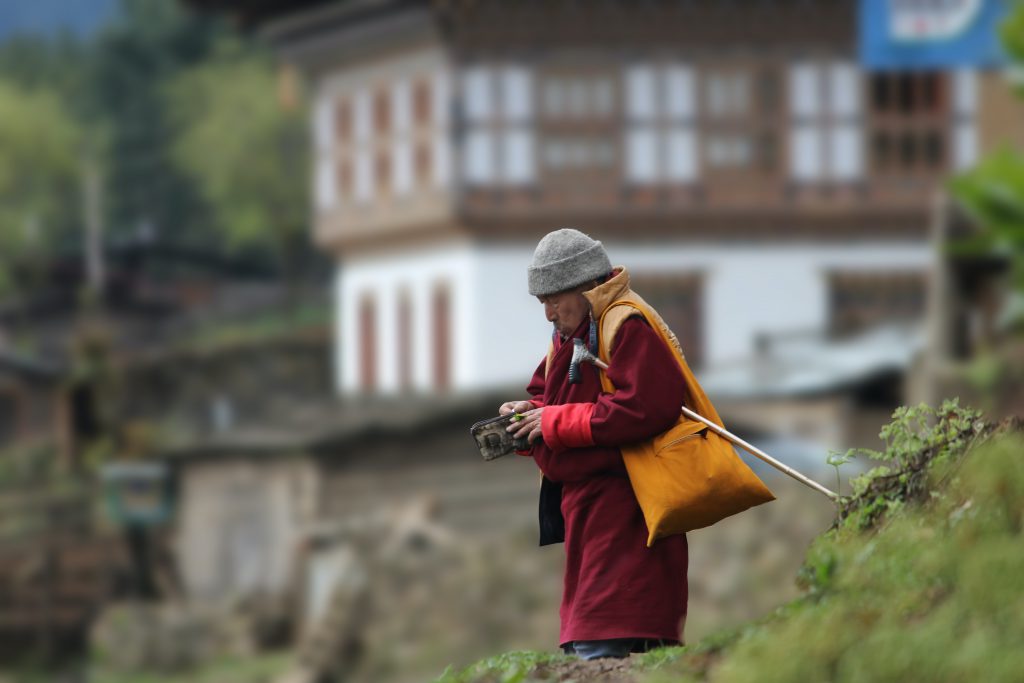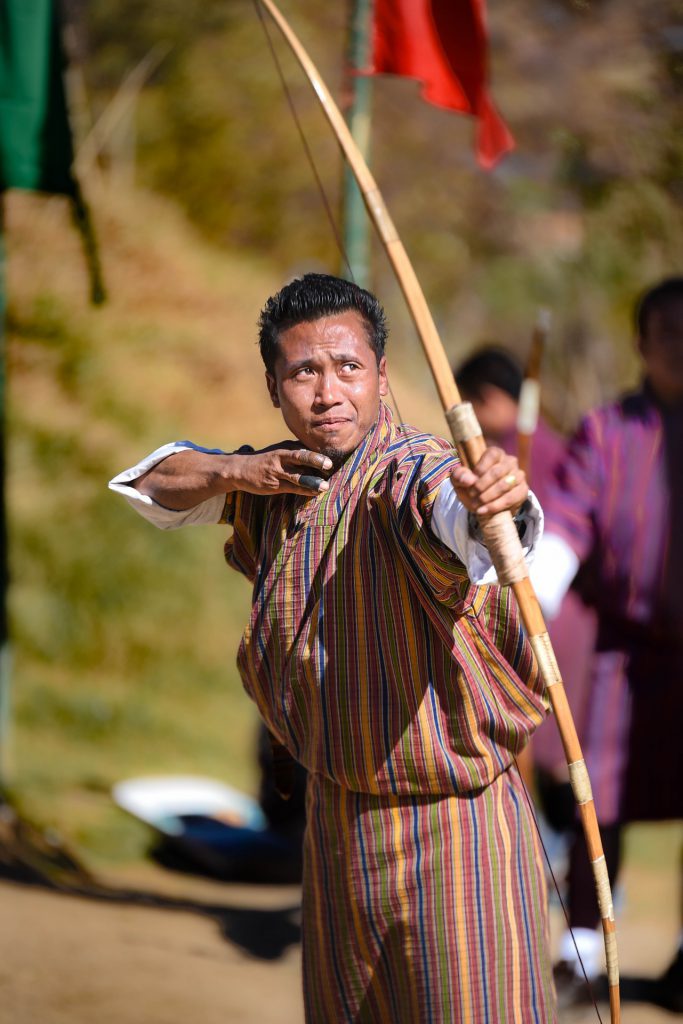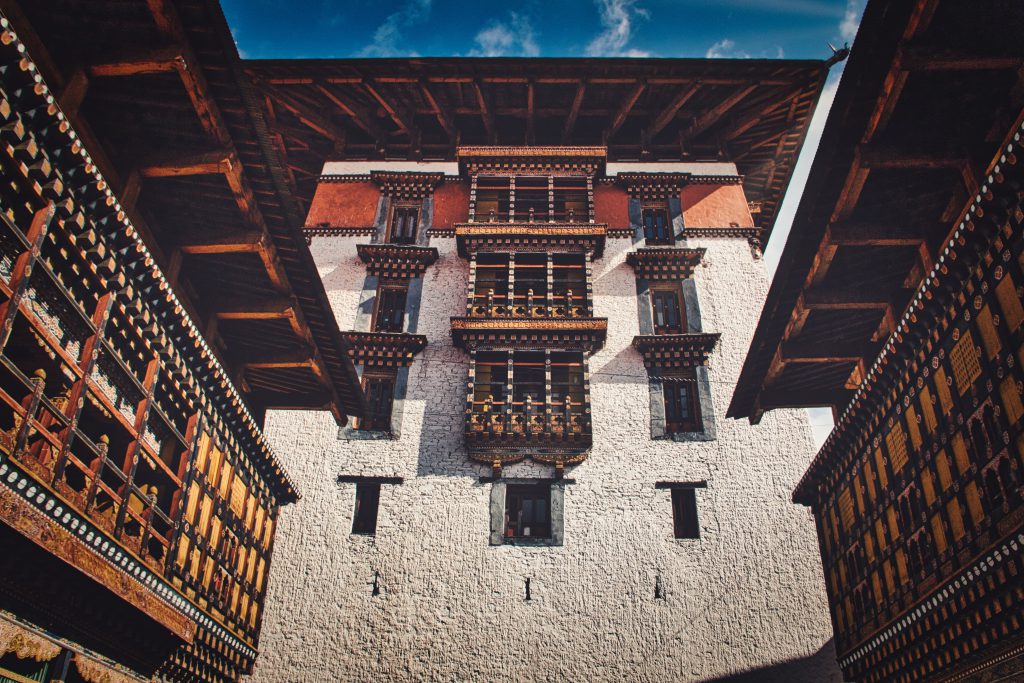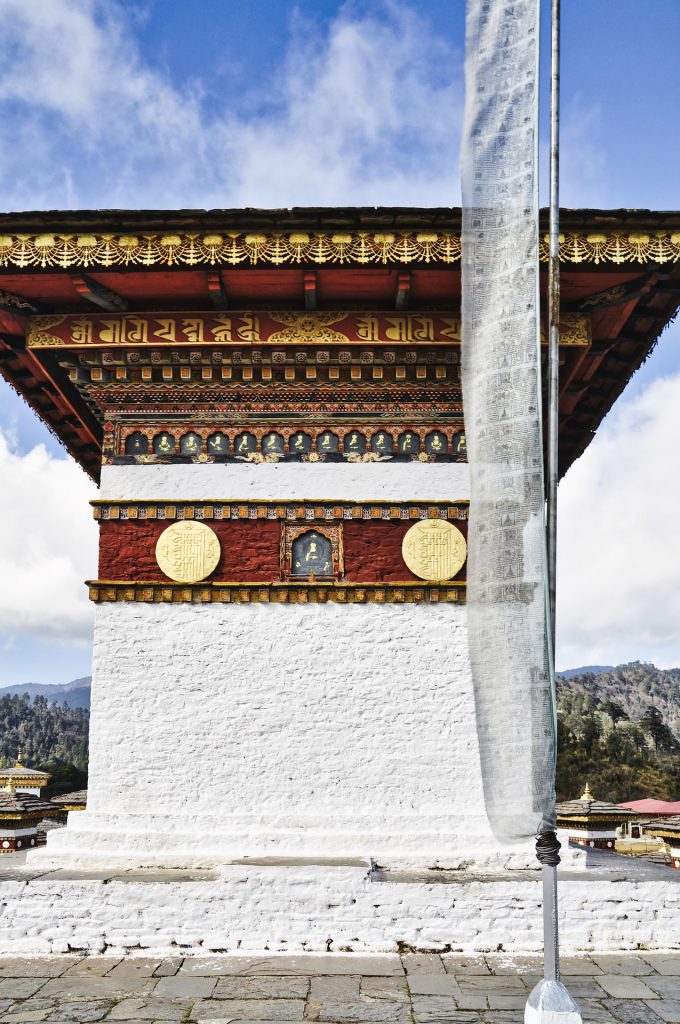The national language is Bhutanese (Dzongkha), one of 53 languages in the Tibetan language family. The script, here called Chhokey “Dharma Language”), is identical to classical Tibetan. Earlier it is spoken only in western Bhutan and it became national language in 1971 is now widely spoken throughout the country. Besides Dzongkha there are three other dominant languages which includes Bumthangkha which is spoken in central Bhutan, Tsanglakha, spoken in eastern Bhutan and Lhotsahmkha, spoken in southern part of Bhutan. There are also roughly 19 other dialects which is very little in common. In the schools English is the medium of instruction and Dzongkha is taught as the national language.


The people of Bhutan are sports lovers. Bhutanese sports can be divided into traditional sports and modern sports.
Traditional sports
Traditional sports and games form an essential part of national culture. Traditional games and sports includes archery, degor somewhat like discus), pungdo (shotput), Khuru (dart), Soksum (javelin) and kheshi (wrestling) form an intregal part of Bhutanese life.
Archery is the national game and it is one of the competitive and favourite recreational sports for young and old alike. Traditional Bhutanese archery is a social event and competitions are held regularly between individual teams, organizations, villages and towns. The tournament begins with traditional ceremony of abundance known as Zhungdrel Phunsum Tshongpa and traditional breakfast. There is a plenty of food and drinks with singing and dancing.Archery is considered to be an art, mastered to attain physical dexterity, mental strength and highest spirit of competition.
Khuru is a dart game which is an equally popular game in our country. Like archery it is also played as a competition between regions, team and so on. Another popular traditional game is degor, a round flat stone tossed at a target and the winner is the one closest to the target. Pungdo, the Bhutanese version of shotput, played with heavy stone is also equally important during earlier times.
Modern sports includes football, volleyball, badminton, table tennis, golf, basketball and taekwondo are also currently encourage in our country. Cricket has gained popularity in recent years while football has always been popular. With increasing awareness of importance and benefits of sports and physical fitness, our country has been participating in various sports in some outdoor countries.
No place has more comprehensively embodied traditional Bhutanese arts and crafts than the Dzongs, the imposing monastic fortresses that appear throughout the landscape. Within their massive walls and measured beams are found items ranging from the most basic and functional to ones of spectacular beauty. Particularly striking are the paintings and statues representing important religious figures. Many intricate and colourful illustrations serve as allegories, dramatizing the continuing struggle between good and evil.
 Bhutanese art and craft possesses three main interrelated characteristics: it is religious, it is anonymous and it corresponds to a certain uniformity of style. As such, items possess no intrinsic aesthetic function, and are instead interpreted as outward expressions of the holistic Buddhist religion. The distinction between more ornate (what one might consider artistic) forms and more practical applications is therefore somewhat blurred. All craftsmen would be considered artisans (scrupulously following tight traditional conventions) rather than artists (who might place greater emphasis on innovation). The Bhutanese style has over centuries been significantly influenced by Tibetan designs, whilst developing its own definite forms and themes.
Bhutanese art and craft possesses three main interrelated characteristics: it is religious, it is anonymous and it corresponds to a certain uniformity of style. As such, items possess no intrinsic aesthetic function, and are instead interpreted as outward expressions of the holistic Buddhist religion. The distinction between more ornate (what one might consider artistic) forms and more practical applications is therefore somewhat blurred. All craftsmen would be considered artisans (scrupulously following tight traditional conventions) rather than artists (who might place greater emphasis on innovation). The Bhutanese style has over centuries been significantly influenced by Tibetan designs, whilst developing its own definite forms and themes.
 In Bhutan the relationship between religion and the arts is extremely intimate. No artistic expression can be separated from its religious significance. This may be exhibited both directly, through the making of items used directly for religious purposes, and indirectly through the motivations involved in the production process. In many respects artistic heights are associated with spiritual achievement. Many of the most eminent religious figures through Bhutanese history were also renowned for their artistic talents. PemaLingpa was an accomplished painter, sculptor and architect, and was raised by a family of blacksmiths. The Shabdrung was gifted in painting and sculpting. The great 15th Century bridge-builder ThangtongGyalpo is revered as an important saint.
In Bhutan the relationship between religion and the arts is extremely intimate. No artistic expression can be separated from its religious significance. This may be exhibited both directly, through the making of items used directly for religious purposes, and indirectly through the motivations involved in the production process. In many respects artistic heights are associated with spiritual achievement. Many of the most eminent religious figures through Bhutanese history were also renowned for their artistic talents. PemaLingpa was an accomplished painter, sculptor and architect, and was raised by a family of blacksmiths. The Shabdrung was gifted in painting and sculpting. The great 15th Century bridge-builder ThangtongGyalpo is revered as an important saint.


Artistic forms used directly for religious purposes include temples, Dzongs, Chortens and Mani walls, Thangkas, wall paintings and images, and numerous ritual objects. Paintings and sculptures are consecrated in a special ceremony, whereby they come to personify the deities they depict. Such works are produced through support from all strata of society. The royal family, nobility and clergy continue to provide very significant patronage. The commission of a work of art is seen as a pious act that will earn great merit. The ubiquity of the arts in Bhutan alludes to the importance of Buddhism in everyday life and the intensity of faith.
 Buddhist art serves a very different purpose from other art forms, being concerned with highlighting certain important values associated with spiritual experience. The role of the artist is therefore to transmit such teaching through their art. The iconographical conventions are thus very strict, and artistic freedom may only be expressed in minor background details. Each deity is viewed as having particular special attributes that cannot be changed without altering the meaning and religious function. Such a design places emphasis on traditional wisdom over and above novelty and innovation.
Buddhist art serves a very different purpose from other art forms, being concerned with highlighting certain important values associated with spiritual experience. The role of the artist is therefore to transmit such teaching through their art. The iconographical conventions are thus very strict, and artistic freedom may only be expressed in minor background details. Each deity is viewed as having particular special attributes that cannot be changed without altering the meaning and religious function. Such a design places emphasis on traditional wisdom over and above novelty and innovation.